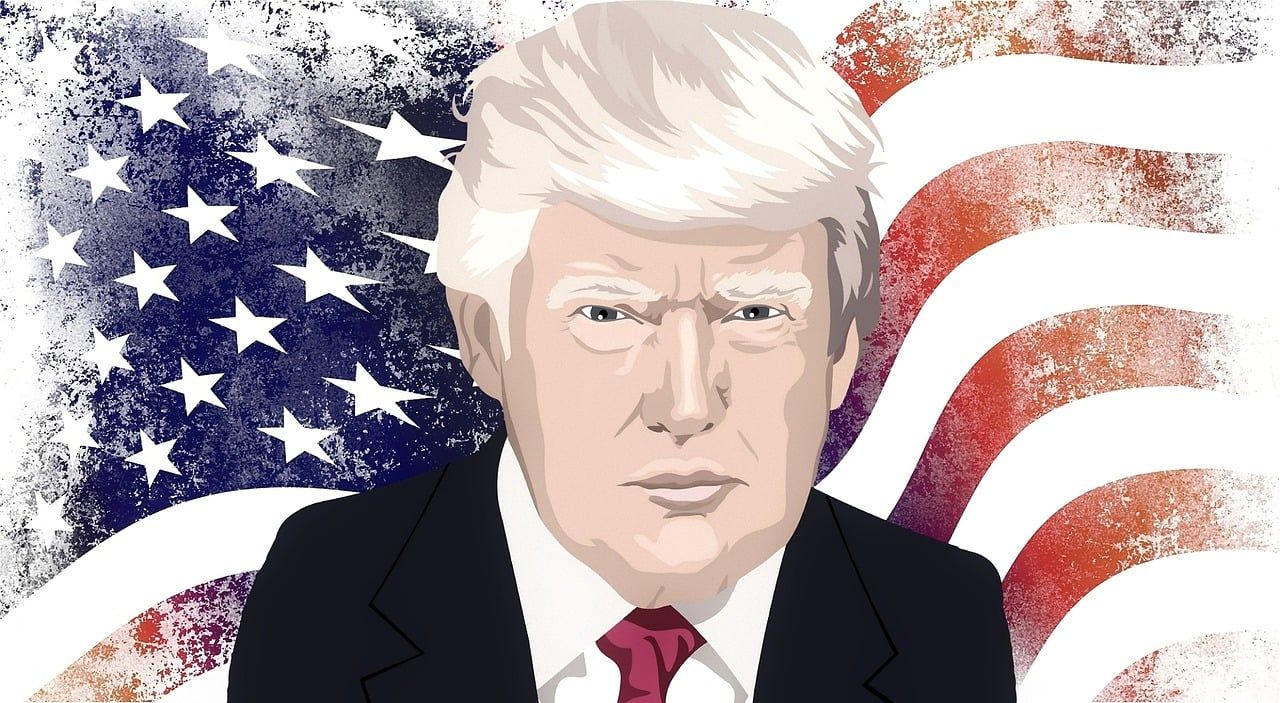Uncategorized
What Next for Bitcoin, Ether, XRP as Donald Trump Eyes Further Tariffs?

Donald Trump’s decision to levy tariffs may have turned market sentiment linked to his pro-crypto promises, causing a steep drop in bitcoin (BTC) and majors in the past 24 hours.
Traders believe Monday’s bloodbath could turn out to be a buy-the-dip opportunity for several reasons, stemming from the eventual growth of and demand for dollar-backed stablecoins.
“One bullish take is for stablecoins,” Peter Chung, head at Presto Research, told CoinDesk in a Telegram message.
“Treasury Secretary Scott Bessent has noted recently that Trump prefers tariffs over sanctions as a diplomatic tool, as the latter push countries away from the dollar, weakening U.S. financial hegemony. If that’s the case, Trump would likely prioritize the Stablecoin Bill in Congress, as it would enhance the dollar’s functionality, reinforcing its global dominance,» Chung said.
Vincent Liu, chief investment officer at Kronos Research, mirrored the sentiment.
«With ongoing concerns over tariff escalations and currency volatility—illustrated by the Canadian dollar’s decline against the USD since tariffs were introduced—stablecoins pegged to major fiat could see accelerated adoption,” Liu said.
“As a hedge against economic uncertainty, they streamline global transactions, remove forex conversion hurdles, and provide a seamless gateway into crypto. In the long run, increased stablecoin adoption could enhance liquidity, attract institutional capital, and drive regulatory clarity. This evolution may position stablecoins as a cornerstone of the crypto economy, reinforcing market stability and fueling sustained growth,” Liu added.
A $2.2 billion flush from rypto futures since Sunday may also provide the bedrock for short-term respite. High liquidations can often signal an overstretched market and indicate the end of a price correction, making it favorable to buy after a steep fall.
Price-chart areas with high liquidation volumes can act as support or resistance levels where the price might reverse due to the absence of further selling pressure from liquidated positions.
However, if the market continues declining, those with short positions might see this as validation, potentially increasing their bets. Conversely, contrarian traders might view heavy liquidation as a buying opportunity, expecting a price recovery once the sell-off momentum wanes.
What Happened?
Trump imposed a 25% tariff on goods from Canada and Mexico and a 10% tariff on imports from China over the weekend. The move seemingly started a trade war: Canada countered with a 25% tariff on $106 billion worth of U.S. goods, and Mexico is expected to implement similar measures.
Two-year Treasury yields increased, while the 10-year yield decreased, indicating concerns about short-term inflation. Asian markets fell on Monday, gold prices dropped, oil rose, and crypto market tanked.
Trump is also eying tariffs on goods imported from the European Union, which could come “pretty soon,” per the BBC. The EU said it would act as a collective and «respond firmly» if and when tariffs come in, indicating retaliatory taxes.
The core idea of tariffs is to make imports more expensive, thereby encouraging domestic production and reducing reliance on foreign goods. This is part of a broader strategy to use trade policy to leverage better terms for the U.S. in international trade negotiations.
However, tariffs increase the cost of goods exported to the U.S., which can hurt these countries’ economies by reducing demand for their products. If one country imposes tariffs, others might respond with their own, leading to a cycle of escalating trade barriers.
Tariffs disrupt established supply chains, which are often globalized. Increasing costs or blocking certain goods can lead to shortages or higher prices elsewhere, prompting further protectionist measures from affected countries — leading to more disruption in financial markets.
The lack of forthcoming catalysts may mean crypto markets are stuck in a lull period, except for a strong, isolated catalyst that directly bumps up bitcoin.
“Sentiment has turned negative with little hope that things can turn around, except for a potential Bitcoin Strategic Reserve and more regulatory support from the government,” Nick Ruck, director at LVRG Research, told CoinDesk in a Telegram message.
“Although the market conditions are vastly different, tariffs from the previous Trump administration could be a showcase for tariff announcements, which were only short-term shocks to crypto prices while the general bullish trend remained intact,” Ruck added.
Uncategorized
What’s Next for Bitcoin and Ether as Downside Fears Ease Ahead of Fed Rate Cut?

Fears of a downside for bitcoin (BTC) and ether (ETH) have eased substantially, according to the latest options market data. However, the pace of the next upward move in these cryptocurrencies will largely hinge on the magnitude of the anticipated Fed rate cut scheduled for Sept. 17.
BTC’s seven-day call/put skew, which measures how implied volatility is distributed across calls versus puts expiring in a week, has recovered to nearly zero from the bearish 4% a week ago, according to data source Amberdata.
The 30- and 60-day option skews, though still slightly negative, have rebounded from last week’s lows, signaling a notable easing of downside fears. Ether’s options skew is exhibiting a similar pattern at the time of writing.
The skew shows the market’s directional bias, or the extent to which traders are more concerned about prices rising or falling. A positive skew suggests a bias towards calls or bullish option plays, while a negative reading indicates relatively higher demand for put options or downside protection.
The reset in options comes as bitcoin and ether prices see a renewed upswing in the lead-up to Wednesday’s Fed rate decision, where the central bank is widely expected to cut rates and lay the groundwork for additional easing over the coming months. BTC has gained over 4% to over $116,000 in seven days, with ether rising nearly 8% to $4,650, according to CoinDesk data.
What happens next largely depends on the size of the impending Fed rate cut. According to CME’s Fed funds futures, traders have priced in over 90% probability that the central bank will cut rates by 25 basis points (bps) to 4%-4.25%. But there is also a slight possibility of a jumbo 50 bps move.
BTC could go berserk in case the Fed delivers the surprise 50 bps move.
«A surprise 50 bps rate cut would be a massive +gamma BUY signal for ETH, SOL and BTC,» Greg Magadini, director of derivatives at Amberdata, said in an email. «Gold will go absolutely nuts as well.»
Note that the Deribit-listed SOL options already exhibit a strong bullish sentiment, with calls trading at 4-5 volatility premium to puts.
Magadini explained that if the decision comes in line with expectations for a 25 bps cut, then a continued calm «grind higher» for BTC looks likely. ETH, meanwhile, may take another week or so to retest all-time highs and convincingly trade above $5,000, he added.
Uncategorized
Asia Morning Briefing: Native Markets Wins Right to Issue USDH After Validator Vote

Good Morning, Asia. Here’s what’s making news in the markets:
Welcome to Asia Morning Briefing, a daily summary of top stories during U.S. hours and an overview of market moves and analysis. For a detailed overview of U.S. markets, see CoinDesk’s Crypto Daybook Americas.
Hyperliquid’s validator community has chosen Native Markets to issue USDH, ending a weeklong contest that drew proposals from Paxos, Frax, Sky (ex-MakerDAO), Agora, and others.
Native Markets, co-founded by former Uniswap Labs president MC Lader, researcher Anish Agnihotri, and early Hyperliquid backer Max Fiege, said it will begin rolling out USDH “within days,” according to a post by Fiege on X.
According to onchain trackers, Native Markets’ proposal took approximately 70% of validators’ votes, while Paxos took 20%, and Ethena came in at 3.2%.
The staged launch starts with capped mints and redemptions, followed by a USDH/USDC spot pair before caps are lifted.
USDH is designed to challenge Circle’s USDC, which currently dominates Hyperliquid with nearly $6 billion in deposits, or about 7.5% of its supply. USDC and other stablecoins will remain supported if they meet liquidity and HYPE staking requirements.
Most rival bidders had promised to channel stablecoin yields back to the ecosystem with Paxos via HYPE buybacks, Frax through direct user yield, and Sky with a 4.85% savings rate plus a $25 million “Genesis Star” project.
Native Markets’ pitch instead stressed credibility, trading experience, and validator alignment.
Market Movement
BTC: BTC has recently reclaimed the $115,000 level, helped by inflows into ETFs, easing U.S. inflation data, and growing expectations for interest rate cuts. Also, technical momentum is picking up, though resistance sits around $116,000, according to CoinDesk’s market insights bot.
ETH: ETH is trading above $4600. The price is being buoyed by strong ETF inflows.
Gold: Gold continues to trade near record highs as traders eye dollar weakness on expected Fed rate cuts.
Elsewhere in Crypto:
Uncategorized
BitMEX Co-Founder Arthur Hayes Sees Money Printing Extending Crypto Cycle Well Into 2026

Arthur Hayes believes the current crypto bull market has further to run, supported by global monetary trends he sees as only in their early stages.
Speaking in a recent interview with Kyle Chassé, a longtime bitcoin and Web3 entrepreneur, the BitMEX co-founder and current Maelstrom CIO argued that governments around the world are far from finished with aggressive monetary expansion.
He pointed to U.S. politics in particular, saying that President Donald Trump’s second term has not yet fully unleashed the spending programs that could arrive from mid-2026 onward. Hayes suggested that if expectations for money printing become extreme, he may consider taking partial profits, but for now he sees investors underestimating the scale of liquidity that could flow into equities and crypto.
Hayes tied his outlook to broader geopolitical shifts, including what he described as the erosion of a unipolar world order. In his view, such periods of instability tend to push policymakers toward fiscal stimulus and central bank easing as tools to keep citizens and markets calm.
He also raised the possibility of strains within Europe — even hinting that a French default could destabilize the euro — as another factor likely to accelerate global printing presses. While he acknowledged these policies eventually risk ending badly, he argued that the blow-off top of the cycle is still ahead.
Turning to bitcoin, Hayes pushed back on concerns that the asset has stalled after reaching a record $124,000 in mid-August.
He contrasted its performance with other asset classes, noting that while U.S. stocks are higher in dollar terms, they have not fully recovered relative to gold since the 2008 financial crisis. Hayes pointed out that real estate also lags when measured against gold, and only a handful of U.S. technology giants have consistently outperformed.
When measured against bitcoin, however, he believes all traditional benchmarks appear weak.
Hayes’ message was that bitcoin’s dominance becomes even clearer once assets are viewed through the lens of currency debasement.
For those frustrated that bitcoin is not posting fresh highs every week, Hayes suggested that expectations are misplaced.
In his telling, investors from the traditional world and those in crypto actually share the same premise: governments and central banks will print money whenever growth falters. Hayes says traditional finance tends to express this view by buying bonds on leverage, while crypto investors hold bitcoin as the “faster horse.”
His conclusion is that patience is essential. Hayes argued that the real edge of holding bitcoin comes from years of compounding outperformance rather than short-term speculation.
Coupled with what he sees as an inevitable wave of money creation through the rest of the decade, he believes the present crypto cycle could stretch well into 2026, far from exhausted.
-

 Business11 месяцев ago
Business11 месяцев ago3 Ways to make your business presentation more relatable
-

 Fashion11 месяцев ago
Fashion11 месяцев agoAccording to Dior Couture, this taboo fashion accessory is back
-

 Entertainment11 месяцев ago
Entertainment11 месяцев ago10 Artists who retired from music and made a comeback
-

 Entertainment11 месяцев ago
Entertainment11 месяцев ago\’Better Call Saul\’ has been renewed for a fourth season
-

 Entertainment11 месяцев ago
Entertainment11 месяцев agoNew Season 8 Walking Dead trailer flashes forward in time
-

 Business11 месяцев ago
Business11 месяцев ago15 Habits that could be hurting your business relationships
-

 Entertainment11 месяцев ago
Entertainment11 месяцев agoMeet Superman\’s grandfather in new trailer for Krypton
-

 Entertainment11 месяцев ago
Entertainment11 месяцев agoDisney\’s live-action Aladdin finally finds its stars





